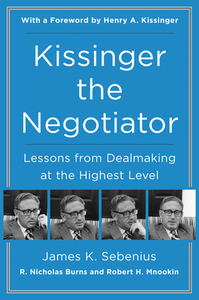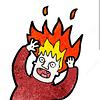Take a photo of a barcode or cover
3 reviews for:
Kissinger the Negotiator: Lessons from Dealmaking at the Highest Level
R. Nicholas Burns, James K. Sebenius, Robert H. Mnookin
3 reviews for:
Kissinger the Negotiator: Lessons from Dealmaking at the Highest Level
R. Nicholas Burns, James K. Sebenius, Robert H. Mnookin
This is an excellent book - far more accessible than I initially thought. It has good, practical takeaways for anyone interested in dealmaking.
I know some people have criticized the rather adoring and laudatory tone the authors have towards Kissinger, which I think is fair. For me though, I just read this book as a way to learn more about the foreign affairs of that era and for that I think it was extremely useful. It has an overview of several of Kissinger's biggest foreign affairs negotiations and the detailed descriptions made it easier for me to remember who was who. Learning about negotiation strategies was just a bonus for me.
This is a nice little gem of a negotiation book. Harvard Negotiation Project’s James Sebenius and his co-authors spent a lot of time and research delving deep into the subject and the mind of the man. They look not just into the substance of Henry Kissinger’s negotiation history but also into his specific tactics and philosophy of negotiation. Kissinger himself wrote the foreword to this book and apparently was pretty candid with the authors as they researched and interviewed him. Perhaps most importantly, they also include information from his detractors. In other words, you’re in good hands with this book. It’s insightful and balanced.
While I read a lot of negotiation and peacemaking books for my career, this one provided some tips and ideas that you don’t always find in these kinds of books. In particular I appreciated the authors’ discussion of Kissinger’s ability to sequence the events of negotiations. Rather than seeing diplomacy as negotiation that happens at the table, Kissinger “zoomed out” to think of all potential players and issues that can tip the yes/no scale. He would then sequence talks, public speeches, private meetings, and more to make the “yes” inevitable when the time to sit at the table came.
Another practical tip included is Kissinger’s distaste for traditional distributive bargaining (win-lose bargaining/competitive bargaining). Rather than just haggle back and forth and meeting in the middle, Kissinger advocates first listening and understanding the situation, speaking in broad philosophical strokes about the philosophy of the negotiations and the goal, and then finally working with the other side to generate sustainable agreements. You don’t have to be a diplomat for that kind of idea to work.
PS If you’re kind of interested in history or diplomacy but you are a little nervous about this one being dry, don’t worry. Even though the page count is over 400 pages, the actual text is about 250 pages. There’s a 30-page summary and then a lot of end notes.
While I read a lot of negotiation and peacemaking books for my career, this one provided some tips and ideas that you don’t always find in these kinds of books. In particular I appreciated the authors’ discussion of Kissinger’s ability to sequence the events of negotiations. Rather than seeing diplomacy as negotiation that happens at the table, Kissinger “zoomed out” to think of all potential players and issues that can tip the yes/no scale. He would then sequence talks, public speeches, private meetings, and more to make the “yes” inevitable when the time to sit at the table came.
Another practical tip included is Kissinger’s distaste for traditional distributive bargaining (win-lose bargaining/competitive bargaining). Rather than just haggle back and forth and meeting in the middle, Kissinger advocates first listening and understanding the situation, speaking in broad philosophical strokes about the philosophy of the negotiations and the goal, and then finally working with the other side to generate sustainable agreements. You don’t have to be a diplomat for that kind of idea to work.
PS If you’re kind of interested in history or diplomacy but you are a little nervous about this one being dry, don’t worry. Even though the page count is over 400 pages, the actual text is about 250 pages. There’s a 30-page summary and then a lot of end notes.



